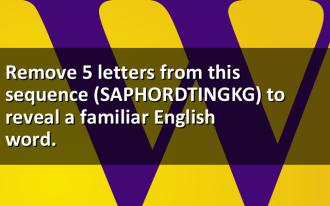Remove 5 letters from this seq...
Remove 5 letters from this sequence (SAPHORDTINGKG) to reveal a familiar English word.
17 Dad jokes and puns for Father's day
Third Sunday of June is Father's Day. Check out Jokes for Father's Day to share with your father.
Cowboys hung lanterns from their saddles at night,
It's the first example of Saddle Light Navigation...
Prison may be just one word to you.
But to others, it’s a whole sentence
Why did the kids think a blanket was the perfect Father's Day gift?
They thought dad was the coolest.
What did one toilet say to the other?
You look flushed.
How do dads like their steak on Father's Day?
On a plate.
Why do seagulls fly over the ocean?
If they flew over the bay, they’d be bagels.
What has four wheels and flies?
A garbage truck.
Why did the Oreo go to the dentist?
It lost its filling.
What do you call a boomerang that doesn’t come back?
A stick.
Did I tell you I ordered both a chicken and an egg from Amazon?
I'll let you know.
Did I tell you I dreamt about drowning in an ocean made out of orange soda last night?
Turns out it was just a Fanta sea.
You know why you should avoid the new Lego store when it opens tomorrow?
People will be lined up for blocks. I don't have a dad bod.
It's a father figure.
There's something about those trees I just don't trust.
They seem kind of shady.
My wife laughed when I said I could make a car out of macaroni.
You should've seen her face when I drove pasta!
I used to play piano by ear
but now I use my hands.
You did a grape job
raisin me, dad.
Dad, you're a real
fungi.

